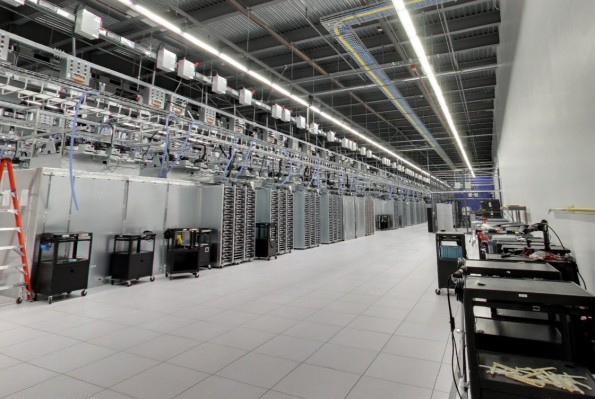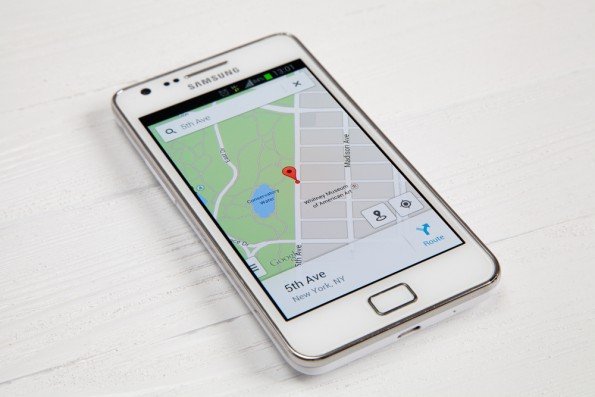Again and again one encounters the abbreviations SaaS, Cloud and ASP as one moves in the enterprise software industry. Sometimes you get the feeling you are in a KAW (Complete abbreviation confusion). The term ASP has become rare because the acronym is somewhat out of fashion, but still to be found. On the surface, seem to be the three shortcuts to mean the same thing, but actually are big differences between them. Software vendors are expressing also different things about their offerings and their scope, but sometimes, for a bit of tact to to feel what is now meant. The wording changed in the IT world finally time to time. Can help in the assessment also some historical context.
The Cloud

Born in the 90s, is the term cloud computing for the use of resources over a network, usually via the Internet. Either infrastructure and storage or applications are provided. In the noughties-years then came the first time the single term “cloud” for the collected packet to my colleague Mario leads the in his article on cloud abbreviations good:
“And suddenly everything was different. I can still remember 2007, when I came back from vacation and the entire Internet only spoke of the “cloud”, and I had after my short break no idea what was meant. What happened? Steve Jobs and Bill Gates had their legendary appearance together at the D5 conference. There they had chosen to use the “cloud” as a synonym for “Internet”, “web” and “cloud computing”, a term that was known only in the network technology at that time. And so there was after the D5 quite a bit of excitement in the developer scene. “
The cloud is now mutatis mutandis as an abstract concept for data centers.
What do the terms mean SaaS and ASP
concept-historical perspective, an ASP application of precursor of software-as-a-Service (SaaS), both appointed by her so first thing one and the same thing: software on demand, applications that run in the browser. The term ASP there were already more than ten years ago, it was pretty quiet sometime around the story, because the time was not yet ripe: Lack of bandwidth and lack of acceptance in the business world were key factors here. Actually ASP is a term that stands for the provider itself, ie the application service provider, but also in terms of the operation “Application Service Providing” or “Application Service Provisioning” is used. I therefore speak from the following ASP or ASP application.
The difference between ASP and SaaS providers defined in purely logical thereby occurring the ASP as a technical service only, so service providers. The actual application is developed by a software company and the ASP delivers them out then. So if a software company passes a SaaS application to a third party provider for the purpose of hosting and maintenance, then we have a SaaS application that was passed to an ASP to be delivered as an ASP application.
Talk contrast, software vendors themselves from an ASP application, then enters the software provider as ASP, and it is likely that the solution is placed as a single instance specifically for the customer at the application level and dedicated is available.
SaaS or cloud application

The software categories on-premise and on-demand can also be found in the cloud world again, at closer examination of a software catalog can play a major role for the customer on-premise stands for Licensed Software is purchased and operated on its own systems, whereas on-demand pay on demand and the supplier to which is operated systems. has since been adopted, one might almost say colloquially, the subsequent use of the terms with the providers of business software established for the respective categories:
SaaS: rental solutions with usage-based billing
Coarse SaaS solutions are told rental solutions running on a technical platform and without further adjustment so for many Customers are simultaneously available. Characteristics of a “real” SaaS Solution: There are no license fees will be invoiced use-dependent. The development of functions or modules not done specifically for a customer, but for everyone. Furthermore, there is no maintenance contract, software maintenance is included, ie the solution is automatically updated and developed at no additional charge. SaaS solutions are scalable, the necessary resources are made available from the manufacturer.
Many consider a solution only as “real” SaaS solution when in usage-based fee all services necessary for the operation of the solution are including without infrastructure such as data centers and hosting, software and maintenance
cloud applications. On-Demand or On-Premise
If an on-premise software is delivered via the browser, then grab many manufacturers to the term cloud application. The software manufacturer occurs either as an ASP for its customers or supplies with the help of a ASPs its on-premise software as an ASP application to the end customers. As a rule, then the same rules as for the operation of an on-premise software apply: A license is purchased, the infrastructure has to be paid according to usage, updates and fixes run in a separate maintenance contract together or will be settled on performance. As described above under ASP application, this ASP application is available to customers then mostly exclusively on dedicated resources.
Since the application of the concepts is not standardized and the term cloud to the end user is more common, but it can also hide behind “real” SaaS application, as described above.
Conclusion
SaaS is on-demand software, ASP is a technical service, an ASP application is an application that is delivered by an ASP, not directly by the SaaS provider , Many vendors use the term cloud application for both “real” SaaS-on-demand applications as well as on-premise software that is made available online.
A slightly kinky play with many abbreviations and to say it with Reinhard Mey: “Those who do not’s asleep far, is either crazy or theater box offices Subscriber”
A complete overview. all cloud buzzwords can be found in our article: “SaaS, DBaaS, IaaS: We tell the buzzwords of the Cloud”
No comments:
Post a Comment